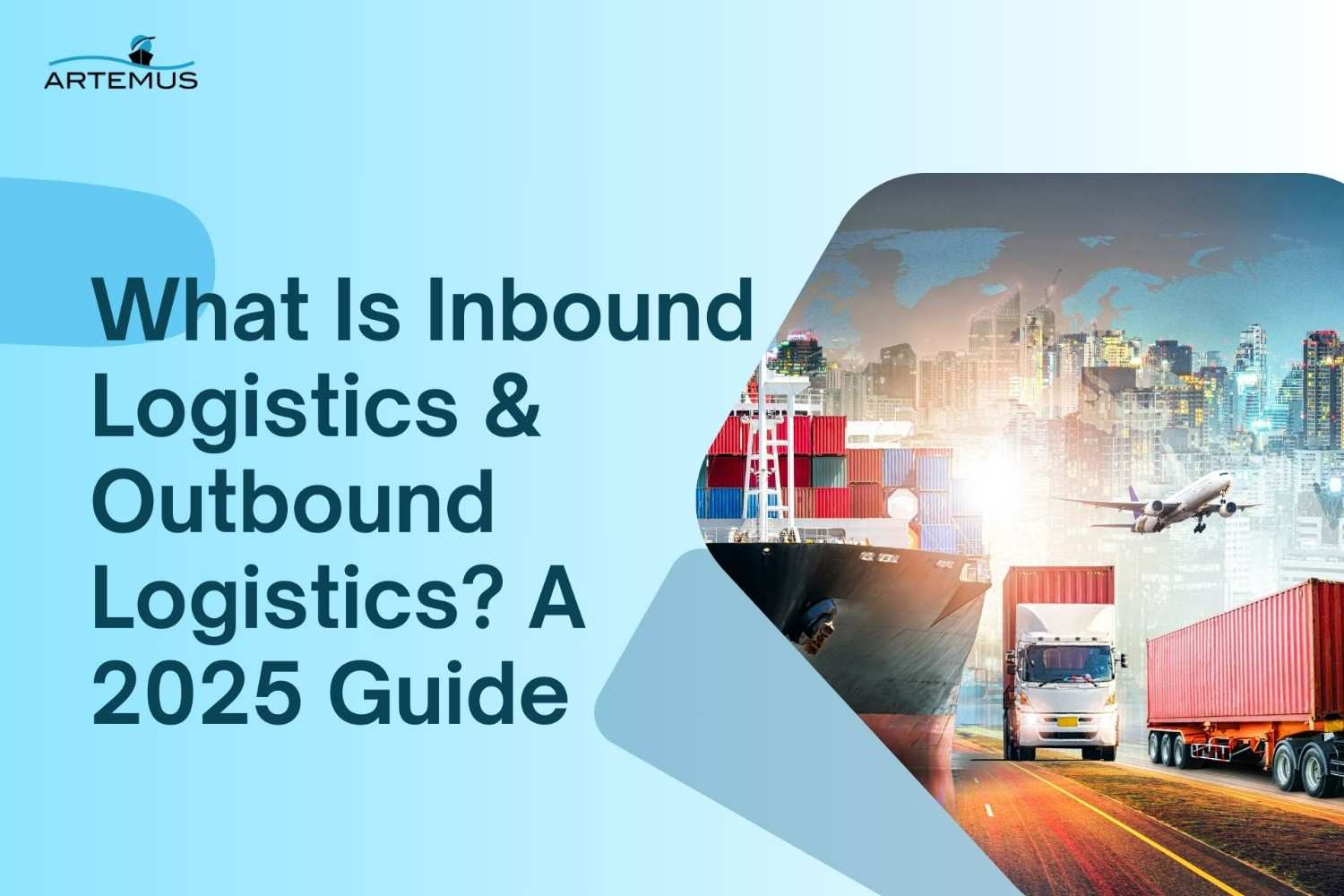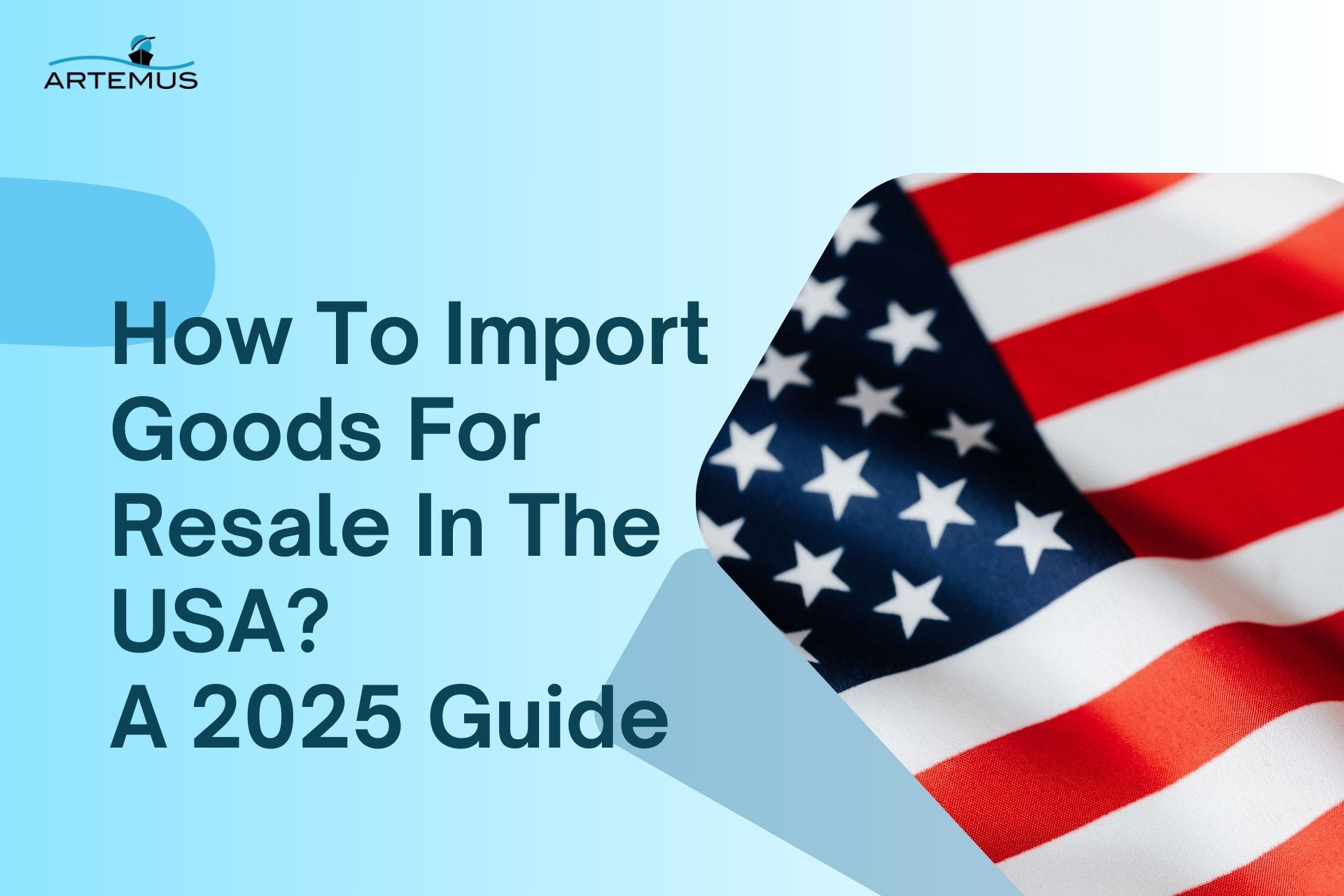
What Is Inbound Logistics & Outbound Logistics? A 2025 Guide
In the dynamic world of supply chain management, understanding the nuances of inbound and outbound logistics is crucial for operational

Importing a car from Australia to the USA can be a rewarding venture, whether you’re bringing over a classic Australian muscle car or a modern vehicle not available in the American market. However, the process involves navigating through a maze of regulations, compliance standards, and logistical challenges.
From understanding the stringent U.S. safety and emissions standards to choosing the right shipping method, every step requires careful planning and execution.
To help streamline this process, Artemus offers advanced ISF (Importer Security Filing) and AMS (Automated Manifest System) software solutions, providing crucial compliance support to ensure your vehicle’s smooth and legal entry into the United States.
Table Of Contents
Importing a car from Australia to the USA involves navigating through a complex process of regulatory compliance, shipping logistics, and documentation.
This step-by-step guide provides detailed instructions to ensure a smooth and legal importation, covering everything from initial research to final registration and certification.
Complete and submit the following forms:
Related: How To Import A Car To The United States? 2024 Regulations
Importing a car from Australia to the USA can be exciting, but it’s important to ensure your vehicle meets the requirements.
Here’s a guide to help you determine if your car qualifies for shipping across the Pacific:
Start by learning about US rules for bringing vehicles into the country. The US Department of Transportation (DOT) and the Environmental Protection Agency (EPA) has strict standards for safety and emissions. Make sure your car meets these standards to avoid problems during customs.
Make sure your car meets USA safety rules. This includes things like lights, brakes, tires, and how well it protects people in a crash. Cars made for other countries might need changes to meet these rules. A mechanic who knows about cars from different countries can help.
Find out if your car meets USA pollution rules set by the EPA. Your car’s engine and exhaust system must meet specific USA standards. If not, you might need to change it before shipping.
Collect all the documents you need to bring your car to the USA. This includes the car’s title, receipt of purchase, proof it meets USA safety and emissions rules and any other important papers. Having everything ready makes it easier when your car arrives in the USA.
Think about how you’ll send your car from Australia to the USA. Look into companies that are good at sending cars overseas. Compare different ways like sharing a container or using a roll-on/roll-off (RoRo) service. Choose based on how much it costs, how long it takes, and how safe your car will be.
Talk to people who know a lot about bringing cars into the USA. Import experts or customs agents can give you good advice. They can help you understand the rules, get your paperwork done right, and make sure your car follows US laws. This can save you time and keep everything legal.
Related: Top 10 Items Exported From India To USA: A 2024 List
To import a car from Australia to the USA, several documents are required to ensure compliance with U.S. regulations:
Additional requirements include complying with the “25-year rule” for vehicles older than 25 years, which allows them to be imported without modifications to meet current safety and emissions standards. For newer vehicles, compliance with U.S. standards or the use of a Registered Importer (RI) may be necessary.
Import duties (2.5% for cars, 25% for trucks, and 2.4% for motorcycles) and a DOT bond equivalent to 1.5 times the vehicle’s value may also apply.
Related: Exporting Mangoes From India To The USA: How To Ship?
Importing a car from Australia to the United States involves several cost components, including shipping, customs duties, taxes, and additional fees for compliance and modifications.
Here is a detailed breakdown:
Related: How To Import From China To USA In 2024: Process & Costs
Importing cars from Australia to the USA involves careful planning, and choosing the right destination port is a key part of the process. The port you select can affect the cost, convenience, and speed of getting your car.
Here are some major destination ports in the USA that are great for cars coming from Australia:
The Port of Los Angeles is one of the busiest ports in the USA and a top choice for importing cars. It has excellent facilities and infrastructure to handle vehicles. Its location is convenient for accessing automotive services, which helps make customs clearance and delivery smooth and efficient.
The Port of Houston is centrally located and popular for importing cars. It serves as a gateway to the southern and midwestern USA, offering efficient transport options to many inland destinations. The port is well-equipped to handle vehicle imports, making the process smooth and reliable.
The Port of Miami is a key destination for importing vehicles to the southeastern USA. Its location and infrastructure make it a cost-effective option. The port offers specialized services for automotive imports, ensuring a hassle-free experience.
The Port of Savannah provides excellent access to markets in the southeastern and central USA. The port’s efficient processes and advanced facilities ensure that vehicles are delivered on time and securely.
Related: How To Import A Car From Japan To USA? A 7-Step Process
Importing a car can be a complex process, but with careful planning and attention to detail, you can ensure a smooth experience.
Here are five practical tips to help you navigate the import process effectively:
Related: Shipping From China To USA: All You Need To Know In 2024
Australian cars have gained a strong following in the USA for their unique style and performance. Here are some of the most popular models that American car enthusiasts love:
1. Holden Commodore: The Holden Commodore, especially the SS model with its powerful V8 engine, is a favorite in the USA. Known for its robust performance and sleek design, it has captured the hearts of many car lovers.
2. Ford Falcon: The Ford Falcon, particularly the GT and XR6 Turbo models, is celebrated for its impressive power and sporty look. It’s a classic Australian car that has found a strong fan base in the USA.
3. Holden UTE: The Holden Ute, a blend of a pickup truck and a sports car, is popular for its versatility and unique appearance. The high-performance Holden Maloo version is especially sought after.
4. HSV GTS & Clubsport: Holden Special Vehicles (HSV) produces high-performance cars like the GTS and Clubsport, which are known for their exceptional power and advanced features, making them highly desirable in the USA.
5. Ford Territory: The Ford Territory, an Australian-made SUV, is liked for its spacious interior and comfortable ride, making it a practical choice for families.
6. Holden Monaro: The Holden Monaro, known in the USA as the Pontiac GTO, is a performance coupe that has gained popularity for its sporty design and powerful engine.
7. Ford FPV (Ford Performance Vehicles): FPV models, like the GT and F6, are high-performance versions of the Ford Falcon, offering even more power and handling, appealing to performance enthusiasts.
8. Holden Torana: The classic Holden Torana is beloved by collectors and enthusiasts for its racing heritage and vintage appeal.
These vehicles are admired for their distinctive blend of style, performance, and practicality, making them popular choices among American car fans.
Related: Import Motorcycle From Canada To USA: A 2024 Detailed Guide
Artemus specializes in providing comprehensive ISF (Importer Security Filing) and AMS (Automated Manifest System) compliance support for importing cars from Australia to the USA.
The ISF filing is crucial for U.S. Customs and Border Protection (CBP) as it requires importers to submit detailed information about their shipments 24 hours before the cargo is loaded onto the vessel. This includes data such as the shipper’s contact details, the consignee, and a description of the goods.
Similarly, AMS compliance is essential for ensuring that the shipping data is transmitted electronically to the CBP, which helps in the efficient tracking and management of the cargo. Artemus offers expert assistance to ensure all required filings are accurate and timely, minimizing the risk of delays, penalties, and fines.
Related: Ocean Transportation Intermediary (OTI): A Shipper’s Guide
Yes, Australian cars can be imported to the USA, but they must meet specific safety, emissions, and other regulatory requirements set by the US government.
The cost to import a car from Australia to the USA varies widely depending on factors such as the vehicle’s size, weight, shipping method, and any applicable taxes or duties. Typically, the cost can vary from a few thousand dollars to several thousand dollars.
Importing a car to the USA can cost anywhere from $2,000 to $7,000 or more, depending on various factors like shipping distance, import taxes, customs duties, and any required modifications to meet US safety and emissions standards.

Importing a car from Australia to the USA is a complex process that requires careful planning and adherence to regulatory requirements. By thoroughly researching regulations, choosing the appropriate shipping method, organizing necessary documentation, budgeting for additional costs, and securing insurance, you can navigate this process smoothly.

In the dynamic world of supply chain management, understanding the nuances of inbound and outbound logistics is crucial for operational

In today’s interconnected world, businesses rely heavily on global trade to expand their markets, access new resources, and drive growth.

Importing goods for resale in the USA presents a lucrative business opportunity, but navigating the complexities of U.S. customs regulations,
Get In Touch
Artemus’ Software Solutions for ISF, AMS, Japan AFR, eManifest Canada, & Panama B2B filings.